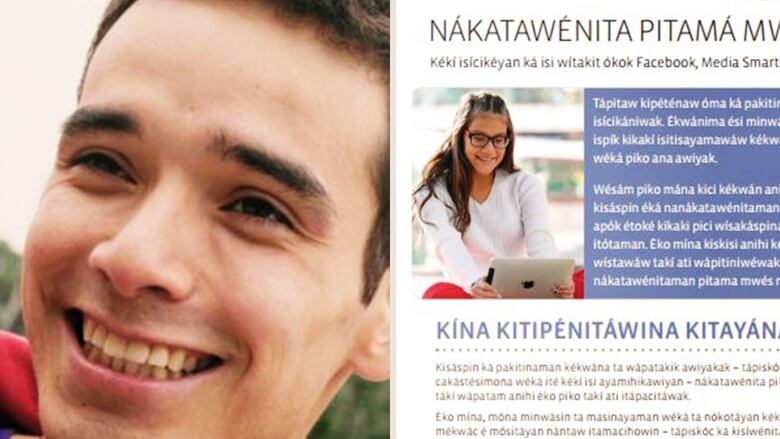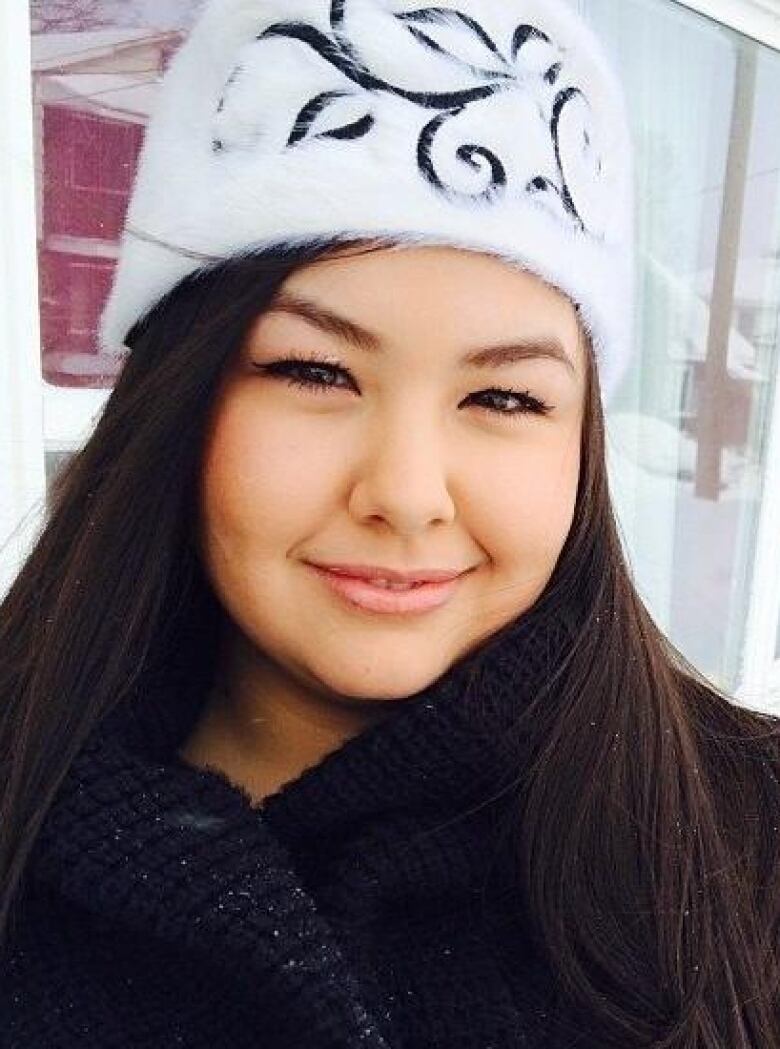Facebook launches youth safety guide in Cree, Ojibway and Inuktitut
Think Before You Share responds to language component of TRC recommendations, says Kevin Chan

Facebook Canada and Media Smarts,Canada's centre for digital and media literacy,launched a resource guide today for youthin Cree, Ojibway and Inuktitut languages at the opening of the National Centre for Truth and Reconciliation.
The guide was originally developed in Englishin 2013. It offers teens advice about sharing and making good decisions online.
"The recommendations coming out of the TRC looked at things like language revitalization. And so we are just really pleased that we are able to do our part, our little part to make things accessible to First Nations [and Inuit] communities," said Kevin Chan, Head of Public Policy for Facebook Canada.
Language key to reconciliation
This past June, the TRC released 94 recommendations, all calls to action. Eight recommendations deal with language.
While the majority were geared toward the federal government, some recommendations called on Canadians in both the public and private sectors.
Chan says Facebook Canada wanted to address some of those recommendations.
"There are a lot of First Nations and other aboriginal communities that are rural and remote Facebook is a way for many communities to be connected together," Chan said.
"We realized that if we want to reach out to communities ... that it would be important to translate some [of our guides] to where they are accessible to everyone."
Charlene Bearhead is the Education Lead with the National Centre for Truth and Reconciliation and is equally excited about the language translation.
"Truth and Reconciliation take many forms, on many levels, through the generations in all communities," Bearhead said in a statement.
"The combination of safety in social media and indigenous languages is a powerful way to inspire this reconciliation and reclaiming of self."
Reaching indigenous youth

"I am at the very beginning. So I only understand very, very basic things," he said."Knowing that there's additional language resources coming from places like Facebook, gives me hope that I'll be able to get a better grasp on my language."
Champagne has taken a lead rolein talking about suicide prevention within the indigenous community on a national scale through a volunteer movement called Aboriginal Youth Opportunities.
Champagne says initiatives like this have the potential to get rid of negative feelings that indigenous youth continue to grapple with.
"My hope is that the side effect will be a reduction in youth taking their own lives," he said.
It removes stigma of young people learning their language when it has something recognizable like theFacebooklogo right beside it.- Michael Redhead Champagne, Cree activist
He says language is an integral part of indigenous identity.
"As I learn about healing and what was taken from many of our communities and families, I feel like it is my responsibility as a young leader to take [the language]back," Champagne said.
He hopes other companies and other social media sites will follow this example, and implement some of the TRC recommendations.
"It removes stigma of young people learning their language when it has something recognizable like the Facebook logo right beside it," he said.
"Especially when it comes to safety and the well being of our young people."

The National Inuit Youth Council President, Maatalii Okalik, agrees that by making those tips available in Inuktitut, it helps bridge the gap not only between mainstream Canada but across Inuit territory.
"With the majority of our 53 communities being disconnected geographically and fly-in only, having the ability to communicate with family, friends, fellow Inuit and people of the world through Facebook is important," she wrote in a statement."Saving our language and culture is our priority."
That is something that Facebook is starting to recognize, says Chan.
"We hope to look at this and potentially do more in the future," he said."Certainly we've had lots of stakeholders ask us about this."
The new guide was developed with support from Aboriginal Peoples Television Network (APTN).












_(720p).jpg)


 OFFICIAL HD MUSIC VIDEO.jpg)
.jpg)



























































































